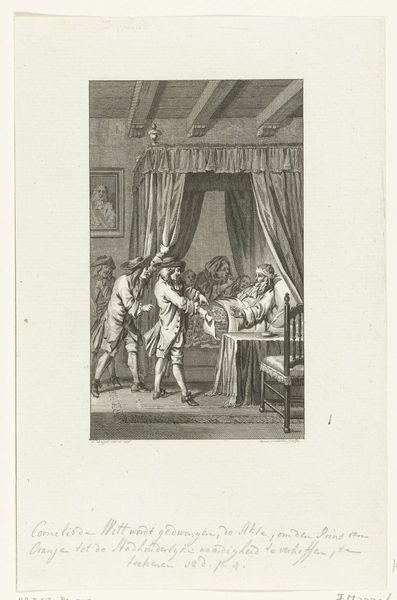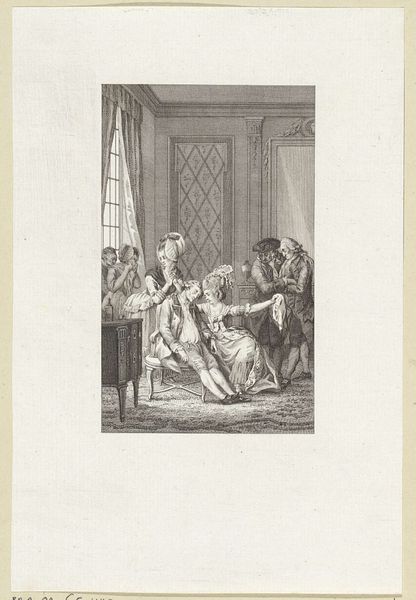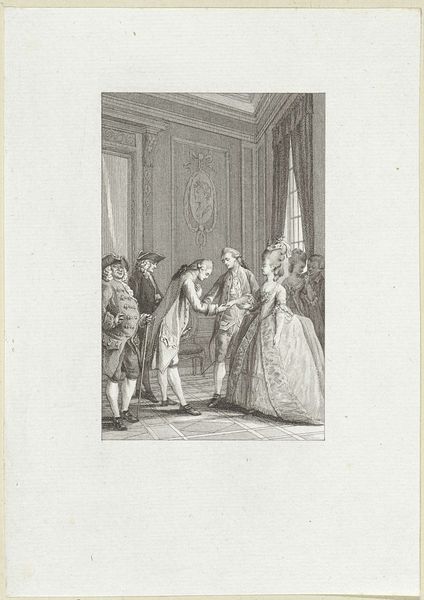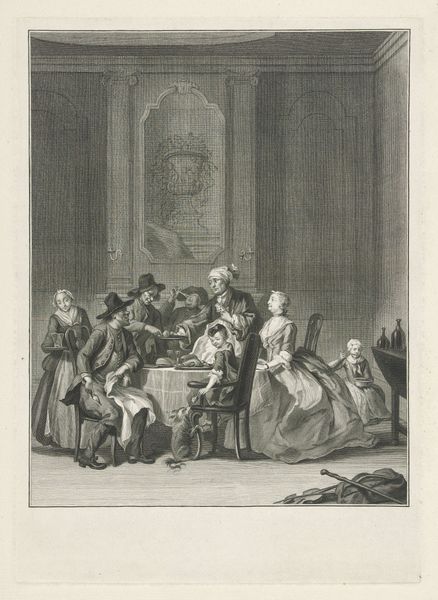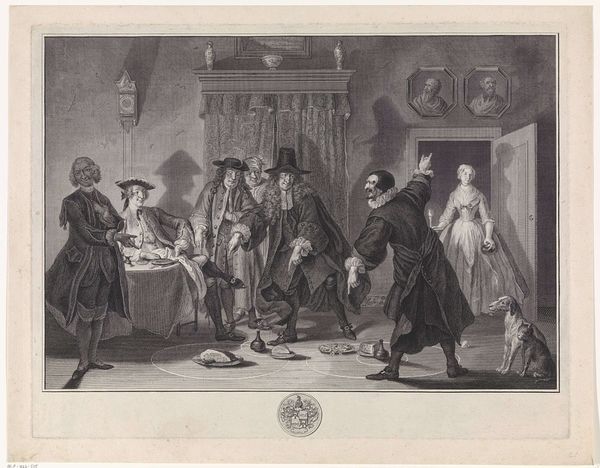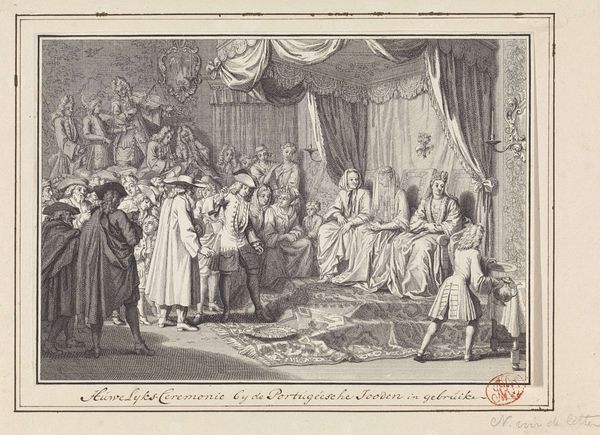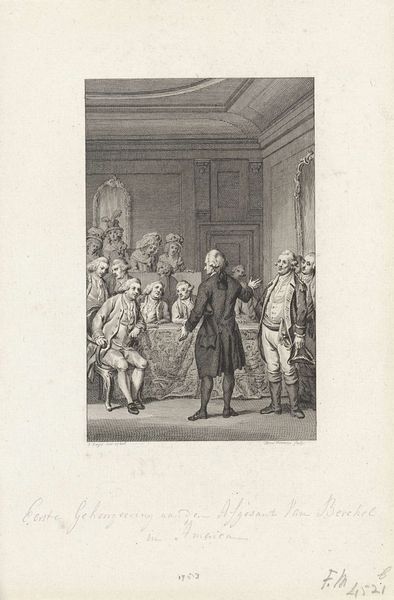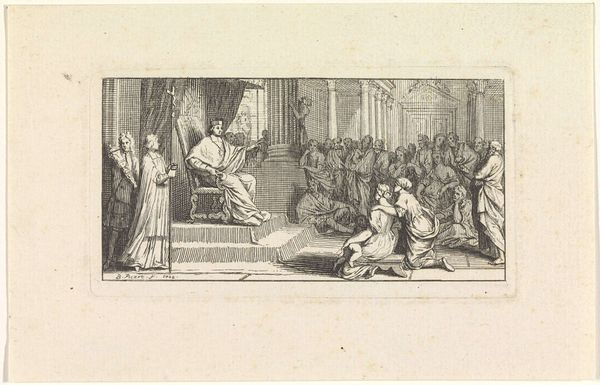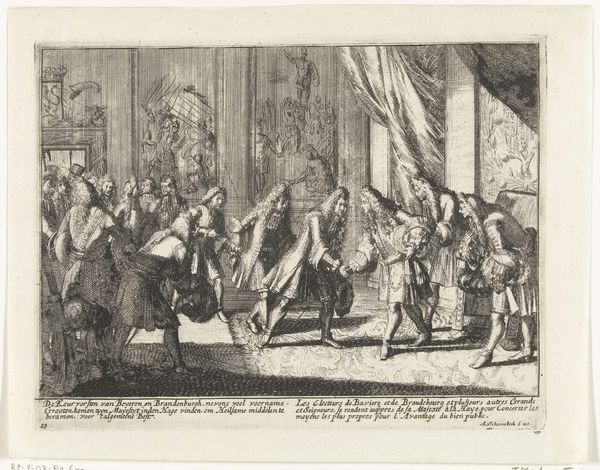
Dimensions: height 230 mm, width 363 mm
Copyright: Rijks Museum: Open Domain
Curator: Here in Gallery 12, we're looking at an engraving from 1782 titled "Spotprent op de prins en zijn aanhang," or "Satirical Print of the Prince and his Supporters." It's by an anonymous artist. The artwork lives here at the Rijksmuseum. Editor: My first impression is chaos! It’s a densely packed scene, almost theatrical. The light source above the central doorway really draws your eye in. What’s your reading? Curator: As the title suggests, it's deeply critical. It appeared during a period of intense political friction in the Netherlands, when the Patriot movement challenged the authority of Prince William V. Editor: So it’s directly engaging with socio-political events, then. I see the prince seemingly incapacitated in the center. What exactly is happening there? Curator: That’s the core of the satire. Figures around him represent various aspects of his perceived failings and corrupt court. It is not a flattering depiction, is it? Editor: Not in the slightest. The people appear to be almost mocking the prince and his followers in this moment. There are layers of social commentary. The baroque feel emphasizes a kind of decay. Curator: Indeed. The print medium itself is important. It allowed for relatively inexpensive reproduction and widespread dissemination of political messages, helping shape public opinion during that revolutionary time. Editor: So it’s not just art for art's sake, but art actively working towards social change. Looking closer, the figure on the far right riding the horse actually has a donkey's head. I think this speaks volumes of how they viewed royalty. The imagery definitely pulls on ideas surrounding status and morality. Curator: Absolutely. And if you consider the Dutch Republic’s historical struggles for independence and self-governance, it highlights an enduring quest for egalitarian ideals. The artwork demonstrates the visual language of protest during a tumultuous period. Editor: Spot on! The act of challenging and subverting dominant figures through caricature, especially the act of satirizing them through visual means, emphasizes how we shape our perceptions of power and our participation within it. Curator: Yes, this piece gives a great indication of this crucial transition for public participation and opinion regarding artwork within culture. Editor: It speaks to art’s enduring relevance. I’ll never view Baroque art quite the same way again, recognizing the capacity for commentary hidden beneath beauty.
Comments
No comments
Be the first to comment and join the conversation on the ultimate creative platform.

